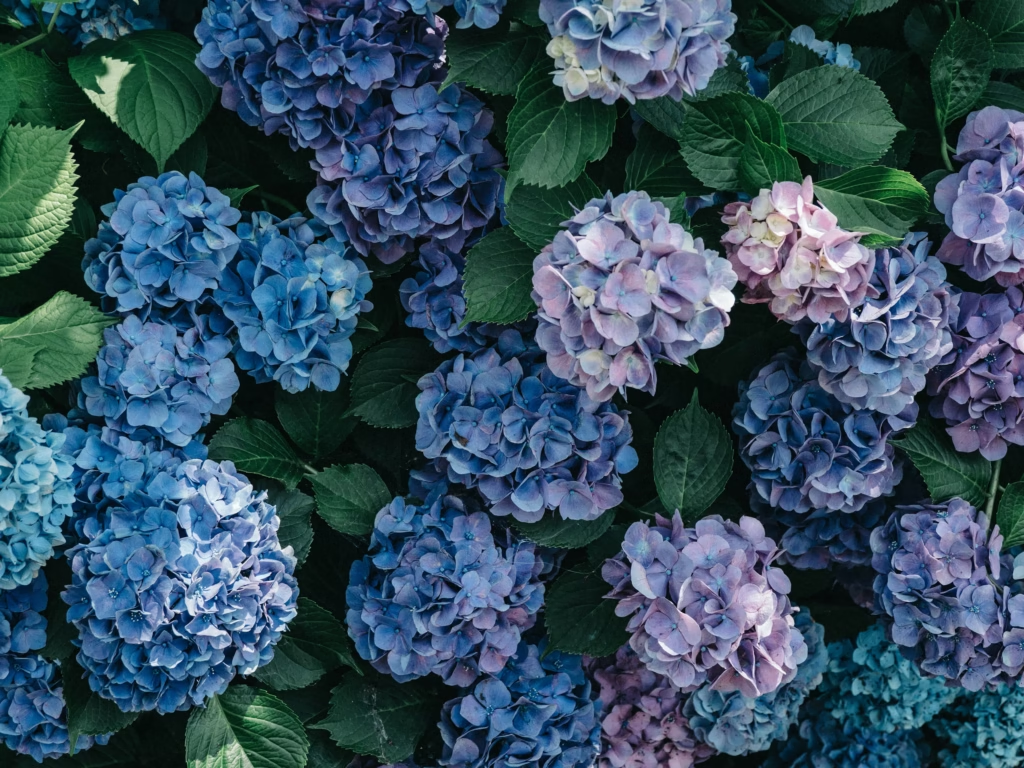
Hydrangeas are beautiful flowering shrubs that add charm and color to any garden. Instead of buying new plants, you can grow hydrangeas from cuttings. This method is simple and ensures you get a healthy plant identical to the parent. Follow this guide to learn how to take a cutting, start it properly, and provide the best care for strong growth.
How to Take a Hydrangea Cutting
The best time to take a hydrangea cutting is in late spring or early summer when new growth is still soft but sturdy. Choose a healthy stem that has not yet flowered. Use clean, sharp pruning shears to cut a 4-6 inch section of the stem. Make the cut just below a leaf node, where new roots will form. Remove the bottom leaves and keep two to three leaves at the top. If the leaves are large, cut them in half to reduce moisture loss.
How to Start a Hydrangea Cutting
To encourage root growth, dip the cut end of the stem in a rooting hormone. This step helps speed up the process, but hydrangeas can root without it. Prepare a small pot with a well-draining potting mix. A blend of peat moss and perlite works best. Make a hole in the soil with a pencil and insert the cutting about an inch deep. Press the soil around the base to keep it secure.
Cover the pot with a plastic bag or clear container to maintain humidity. Place the cutting in a warm spot with indirect light. Check the soil regularly and mist it to keep it moist. In about four to six weeks, the cutting should develop roots. You can gently tug on the stem to check for resistance, which indicates rooting.
Preparing Soil for Hydrangeas
Hydrangeas thrive in well-draining, nutrient-rich soil. Before planting, prepare the soil by mixing in compost or organic matter to improve drainage and fertility. The pH level affects flower color-you can use this soil meter to test your soil. Acidic soil (pH below 6) produces blue flowers, while alkaline soil (pH above 7) results in pink blooms. If you want blue flowers, add aluminum sulfate to the soil. For pink flowers, use garden lime to raise the pH.
Light Requirements for Hydrangeas
Hydrangeas grow best in locations with morning sun and afternoon shade. Too much direct sunlight can cause the leaves to scorch, especially in warmer climates. If your garden gets intense sun, plant hydrangeas in a spot with dappled shade. In cooler regions, they can tolerate more sun as long as the soil stays moist.
How to Plant Hydrangea Cuttings
Once the cutting has developed strong roots, it’s time to transplant it into the garden or a larger pot. Choose a location with partial shade and well-draining soil. Dig a hole slightly larger than the root ball and loosen the soil at the bottom. Gently remove the cutting from the small pot and place it in the hole. Fill in the space with soil and press it down lightly. Water the plant thoroughly after planting to help it settle.
Fertilizing Hydrangeas for Healthy Growth
Hydrangeas benefit from regular feeding to support lush foliage and vibrant blooms. In early spring, apply a balanced, slow-release fertilizer. A 10-10-10 fertilizer works well. Avoid over-fertilizing, as too much nitrogen can lead to excessive leaf growth and fewer flowers. During the growing season, you can apply a diluted liquid fertilizer once a month. Stop fertilizing by late summer to allow the plant to prepare for dormancy.
Pruning Hydrangeas for Better Blooms
Proper pruning helps hydrangeas maintain their shape and produce more flowers. The timing depends on the hydrangea variety. For bigleaf and oakleaf hydrangeas, prune right after flowering since they bloom on old wood. For panicle and smooth hydrangeas, prune in late winter or early spring because they bloom on new wood. Remove dead or weak stems and shape the plant as needed. Avoid heavy pruning, as this can reduce flowering.
Winter Care for Hydrangeas
Hydrangeas need protection from harsh winter conditions, especially in colder climates. Apply a thick layer of mulch around the base in late fall to insulate the roots. If temperatures drop below freezing, cover the plant with burlap or a frost cloth to prevent damage. Potted hydrangeas should be moved to a sheltered location, such as a garage or enclosed porch. Water sparingly in winter, just enough to keep the roots from drying out.
Final Thoughts
Growing hydrangeas from cuttings is a rewarding and cost-effective way to expand your garden. With proper care, your new plants will thrive and produce stunning blooms. By following these steps, you can successfully propagate hydrangeas and enjoy their beauty for years to come.
Please be sure to check out my Gardening Blog Post Page for more tips on all types of gardening. Including Seed Saving, Seed Starting, Orchids, Water Gardening, Coldframe Gardening, Indoor Bulb Gardening, Hydroponics, Container Gardening, Mums, Herbs, African Violets, planting Bulbs, Flower Gardening, Vegetable and Fruit Gardening, Indoor Houseplants of all kinds, Cactus, Succulents, Hanging plants, Deer resistant plants and even Bird, Bee, Butterfly and Hummingbird Gardens!
